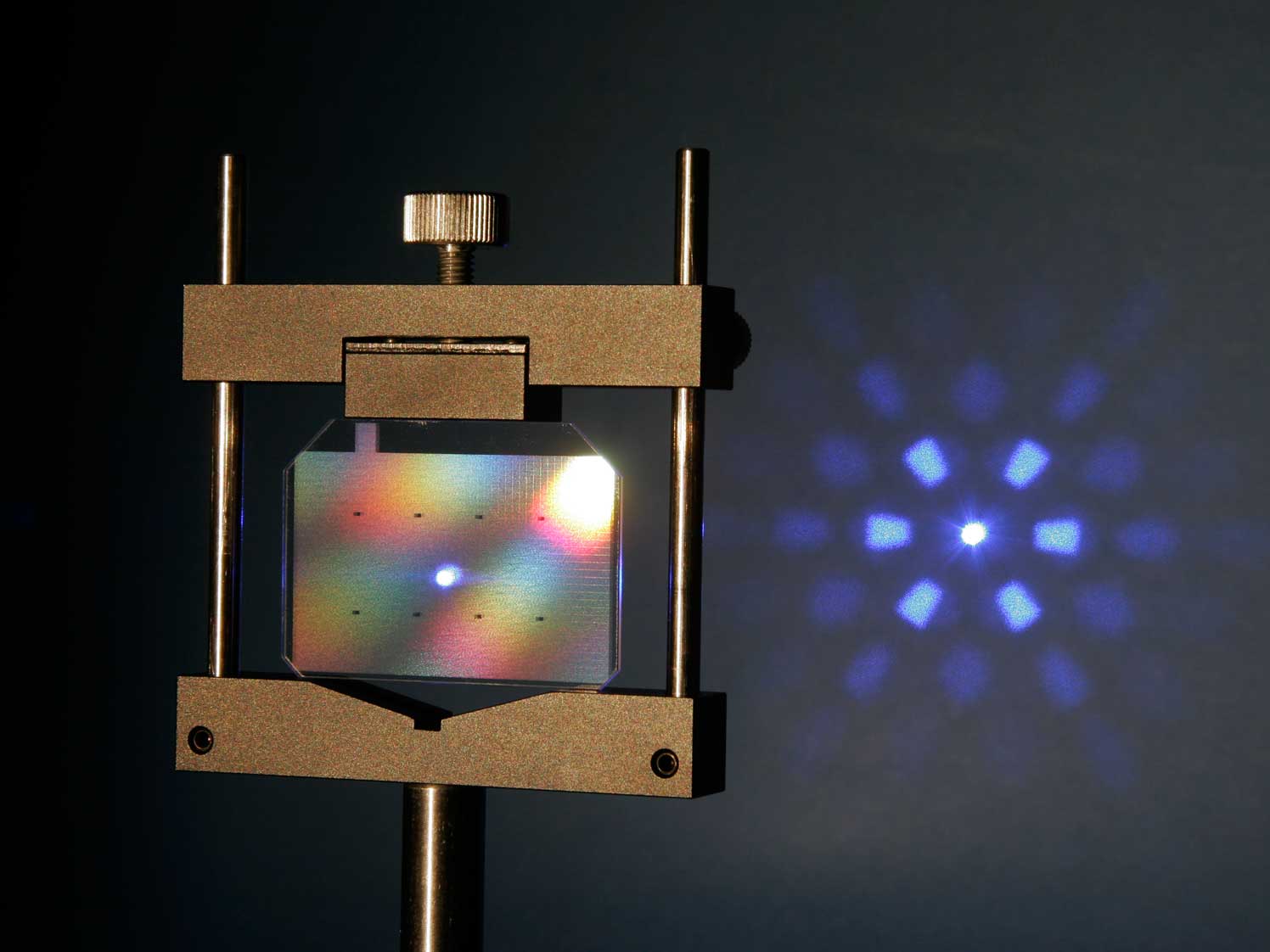Know About the Modern Practical Application of Diffractive Optics

Diffractive optics can be applied to solve a surgical problem. For example, during a cataract surgery, an ophthalmologist replaces the cloudy lens of the eye by an artificial lens known as intra-ocular lens or just implant.
The conventional implant whose refractive optical design is like a magnifying lens creates chromatic aberration since its edges act as prisms. Prisms essentially bend light of short wavelength such as blue light more than long wavelength light like red light. That is the reason a pinpoint light is seen to have a halo (a ring of light) of chromatic aberration with a red outer edge.
Lenses designed with DO also create chromatic aberrations, but in the reverse direction. Such a lens bends light of short wavelength less. In this scenario, a pinpoint light is seen to have a halo of chromatic aberration with a blue outer edge.
Because of the chromatic aberration of both the kinds with ideal sharp vision, the apparent solution is to have an implant designed with a blend of diffractive optics and refractive optics. The two types of chromatic aberration can be made to abort each other.
Just as any other tool a lens designer uses, Diffractive Optical Elements (DOEs) have their own uses. With a strong negative dispersion, they can correct chromatic aberration, and they can be designed in such a way that they can produce arbitrary illumination patterns that would be hard to make with only RO.

Ultimately, although you can call them Fresnel lenses with a fewer features, it is imperative to know that Fresnel lens is a DO, merely a simple one. The fact of the matter is, when you attain a deeper understanding of diffraction; you will come to know that in a certain angle, all lenses are DOs. While you can bring about the phase profile of a DOE to create highly complicated optical field, you can also design one in order to create a simple focal spot. The end design will be a simple lens.
A DOE demystifies the optical design form and enhances the image quality of a refractive optical system. DOE enhances optical system performance while reducing the cost and weight by cutting down the number of lens components and desensitizing wrong alignment tolerances. All in all, better optics equals better system performance. The success/failure of your machine vision applications relies on the quality of your optics, so as to ensure accuracy, repeatability, and agility.



